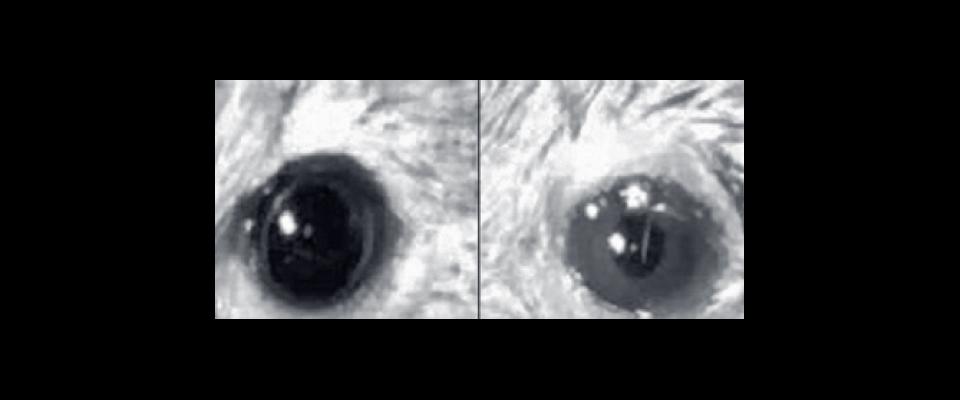In Star Trek: The Next Generation, a blind character wore a visor that helped him to see the world. With any luck, that won’t be science fiction for long.
UC Berkeley Professor Richard Kramer and his colleagues, including graduate student Ivan Tochitsky, have engineered a molecule that, when injected into the eyes of blind mice, causes them to react to light. With a little extra hardware, Kramer says, this molecule could help humans suffering from diseases like macular degeneration and retinitis pigmentosa.
Kramer is an optical neuroscientist. The molecule he helped to engineer, called DENAQ (dee-nac), has a two-pronged action: The rod-shaped molecule folds when exposed to light, opening the plugged-up ion channels in the retina. It also completes the electrical circuit to the cellular layers of the retina beyond the dead rods and cones, artificially making these layers sense light. Currently, the drug lasts for about one week.
Is it that the brain is still paying attention to these circuits after the rods and cones are dead and shriveled? “That’s the big assumption,” Kramer says. They hope the drug will be approved for human testing in the next three years and they will find out more.
According to the Center of Disease Control and Prevention, the number of people with age-related macular degeneration is expected to reach 2.95 million in 2020.
How might the use of DENAQ work in practicality? “It’s not just that you are going to get an injection in the eye and you are going to be able to walk around and do everything you ordinarily do,” Kramer says. “You’ll probably have to use an assistant device—a pair of smart goggles that basically takes the visual world and reinterprets it so that the photo stimulation of your retina operates within the operating range [of the molecule].”
DENAQ replaces the molecule called AAQ, which made headlines in July 2012. The new molecule lasts longer and requires about 100 times less light. “AAQ was a great proof of principle, but not really practical as a drug,” Kramer says. The results of preliminary testing of DENAQ are published in the February 2014 issue of Neuron.
An amazing property of DENAQ is that it only works on rods and cones that are diseased. It doesn’t affect healthy rods and cones. Kramer says, “This is an extremely hopeful sign that it won’t have any side effects on the rest of the retina.”
Kramer has recently won a five-year, National Institutes of Heath grant to do preclinical testing, in which he will test the molecule on larger mammals to make sure there are no toxicity issues. He hopes to get it to the FDA within about three years.
“We can apply to the FDA for consideration as an Investigational New Drug,” he explains. “Then they let you do a very limited clinical trial on people. That’s when it gets exciting, because animals can only tell us so much about what they see, whereas a human being can actually verbally tell us what they are seeing.”
From the Summer 2014 Apocalypse issue of California.





















